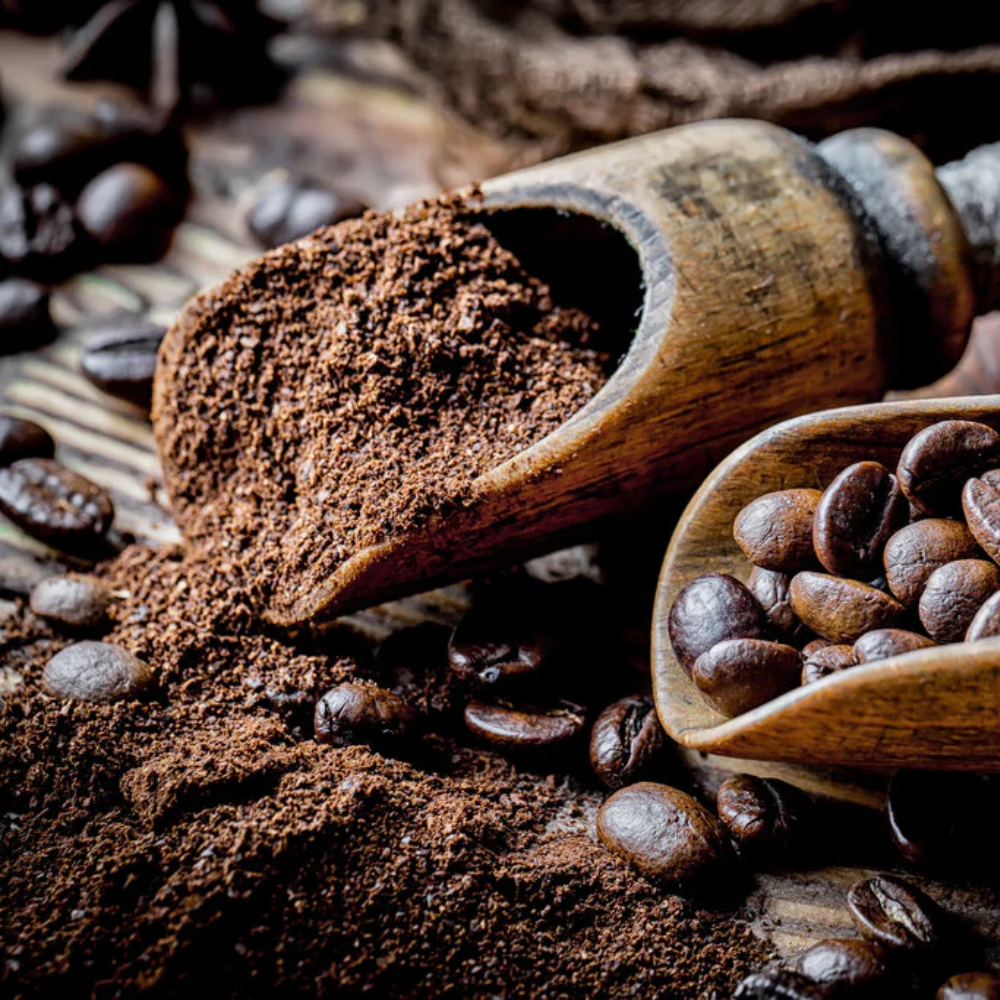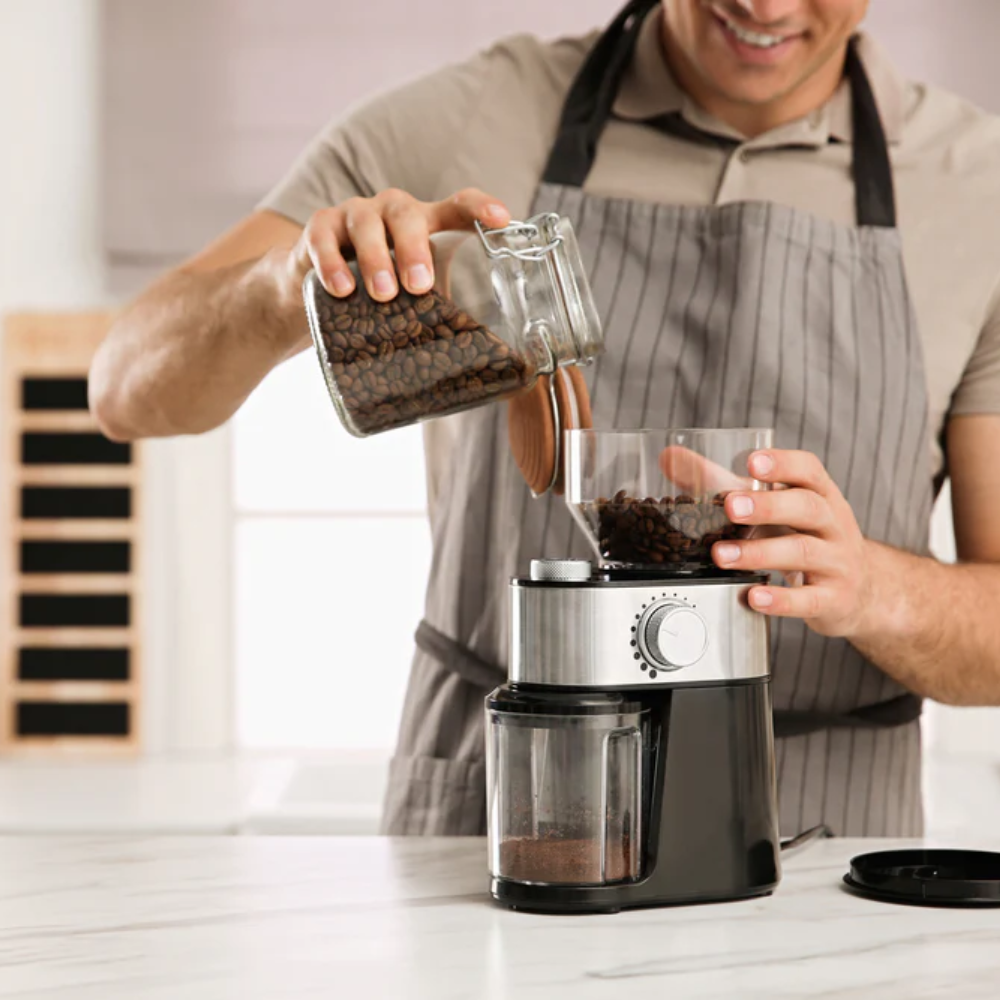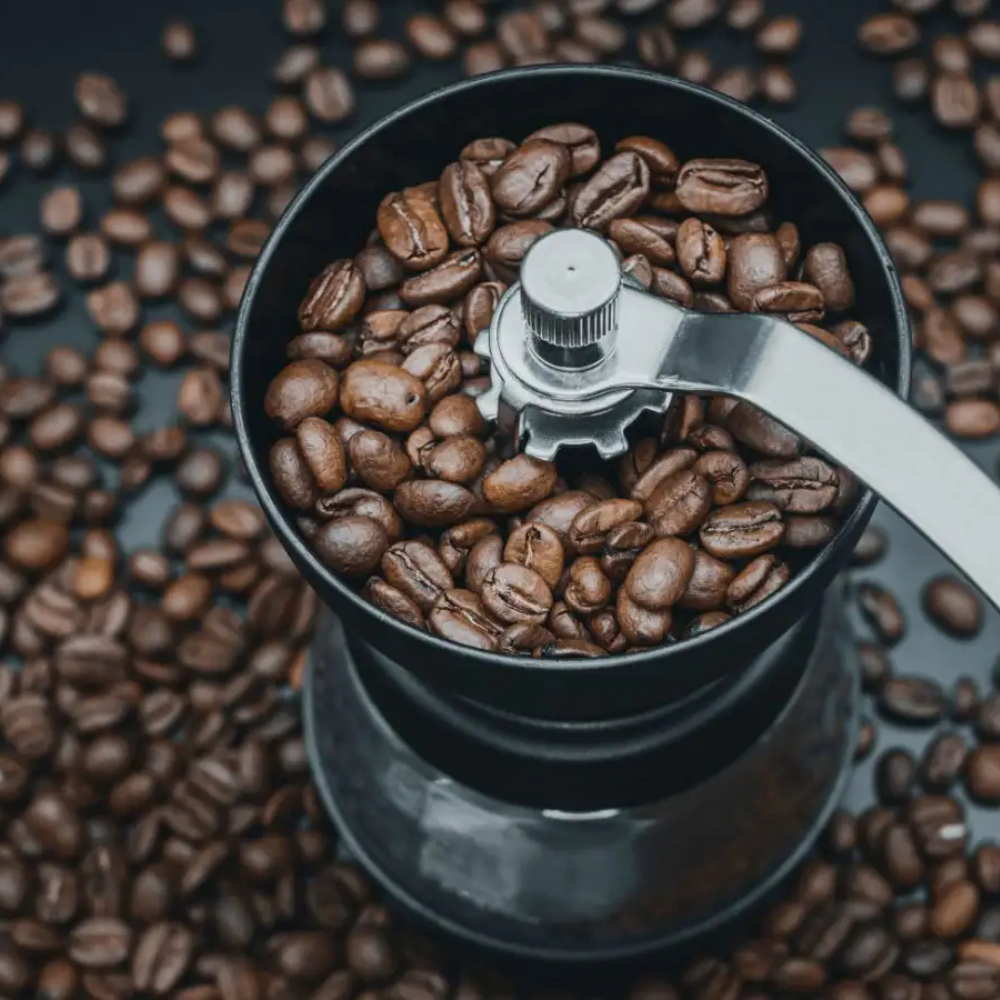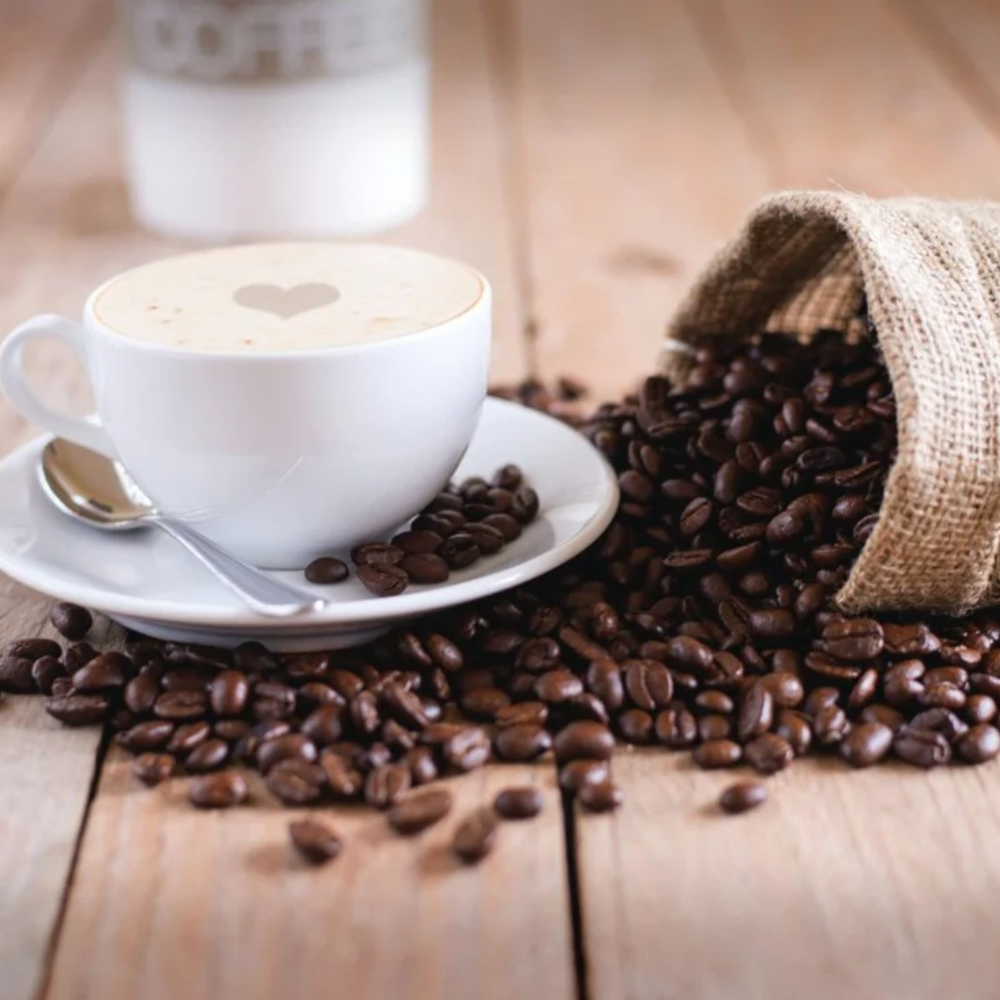Coffee lovers know that grinding fresh coffee beans is the key to a delicious cup of coffee. Pre-ground ones can never replace ground coffee beans' aroma, flavor, and freshness. Investing in a good quality grinder is essential for any coffee enthusiast. Grinding your own beans may seem daunting, but it's quite simple once you get the hang of it.
In this guide, we'll discuss how to grind coffee beans with a grinder and highlight some important tips to keep in mind. From choosing the right type of grinder to adjusting the grind size for different brewing methods, we've got you covered. So grab your favorite bag of whole-bean coffee and let's dive into the world of grinding coffee beans with a grinder.
Why Grind Your Own Coffee Beans?

Grinding your own coffee beans allows you to have complete control over the freshness and flavor of your coffee. When coffee beans are ground, they release oils that give them their distinct aroma and flavor. These oils gradually dissipate when exposed to air, which is why pre-ground coffee loses its freshness quickly.
By grinding your own beans, you can ensure that each cup of coffee is made with freshly ground beans, resulting in a more flavorful and aromatic brew. Additionally, different brewing methods require different grind sizes for optimal extraction. Grinding your own beans allows you to adjust the grind size according to your preferred brewing method.
Moreover, whole-bean coffee tends to be cheaper than pre-ground ones, making it a cost-effective option in the long run. It also gives you the flexibility to experiment with different types of beans and blends, giving you a wider range of flavors to choose from.
Step-by-Step Guide on Grinding Coffee Beans with a Grinder

Before we dive into the steps, it's important to note that there are two types of grinders commonly used for grinding coffee beans - blade and burr grinders. While blade grinders are more affordable, they produce uneven grounds and can result in a bitter-tasting brew. On the other hand, burr grinders offer more precise and consistent grinding, making them the preferred choice for most coffee enthusiasts.
Now let's get down to the steps:
Measuring the coffee beans
Measuring your coffee beans accurately is crucial for achieving the perfect brew. A general guideline is to use one to two tablespoons of coffee beans per six ounces of water, but this can be adjusted to suit your taste preferences.
For a more precise measurement, consider using a kitchen scale. Weigh out 15-20 grams of coffee beans for a standard cup, depending on how strong you like your coffee. This method not only ensures consistency in flavor but also allows you to experiment with different bean types and roast levels.
Once measured, it's important to keep the beans sealed in an airtight container to maintain their freshness before grinding. Proper storage will help preserve the rich aromas and flavors until you're ready to enjoy your brew.
Adjusting the grind size
The grind size of your coffee beans is essential for achieving the desired flavor and strength in your coffee. Different brewing methods require different grind sizes, with coarse grounds suitable for French press and finer grounds better for espresso.
Most grinders have adjustable settings that allow you to choose the desired grind size. It's recommended to start with a medium-fine grind and adjust from there according to your taste preferences.
When adjusting the grind size, keep in mind that a shorter brewing time requires a finer grind, while a longer brewing time needs a coarser one. Experimenting with different grind sizes will help you find the perfect balance for your taste buds.
Loading the beans into the grinder
Once you have measured and adjusted the grind size, it's time to load the beans into the grinder. Make sure to check the manufacturer's instructions for how much coffee beans can be loaded at a time. Overloading can result in uneven grounds or damage to the machine.
For blade grinders, avoid over-packing as it can prevent even grinding. For burr grinders, evenly distribute the beans in the hopper to ensure consistent grinding.
Grinding the beans
After loading the beans, turn on the grinder and let it run until all of the beans have been ground. The length of time will depend on your desired grind size - a finer grind will take longer than a coarser one.
To achieve the best results, it's recommended to pulse the grinder rather than keep it on continuously. This allows for more control over the grind size and prevents overheating of the beans.
Checking the grind consistency
Once all of the beans have been ground, it's important to check the consistency of the grounds. Uneven grounds can result in an inconsistent brew and affect the overall flavor of your coffee.
For blade grinders, you may need to shake or stir the grounds to ensure even grinding. For burr grinders, simply inspecting them should suffice.
If you notice any large chunks or uneven grounds, consider adjusting the grind size or pulsing the grinder for a longer period.
Emptying and cleaning the grinder
After grinding your beans, it's essential to clean the grinder to prevent any leftover grounds from affecting the flavor of your next batch.
Start by removing the hopper and washing it with warm soapy water. For blade grinders, use a brush or cloth to wipe away any remaining ground from the blades. For burr grinders, remove the burrs and wash them as well.
Make sure everything is thoroughly dried before reassembling the grinder and storing it in a cool dry place until your next use. Regular cleaning will not only ensure a better-tasting cup of coffee but also prolong the life of your grinder.
So there you have it - a step-by-step guide on grinding coffee beans with a grinder. With these tips, you'll be able to achieve the perfect grind for your preferred brewing method and enjoy a delicious cup of coffee every time.
How To Choose A Good Grinder For Your Coffee Brewing Needs

While having a grinder is essential for achieving the perfect cup of coffee, choosing the right Coffee Grinder can be overwhelming with so many options available. Here are some factors to consider when choosing a grinder:
- Type of grinder: As mentioned earlier, blade and burr grinders are the most common types. While blade grinders are more affordable, burr grinders offer better precision and consistency.
- Grind settings: Look for a grinder with multiple grind settings to cater to different brewing methods.
- Capacity: Consider the amount of coffee you typically brew and choose a grinder with an appropriate capacity.
- Budget: Grinders can range from inexpensive manual ones to expensive electric ones. Determine your budget before choosing a grinder.
- Quality of build: A well-built grinder will last longer and provide a better grinding experience than a cheaply made one.
With these factors in mind, do some research and read reviews to find the best grinder for your needs. Investing in a good quality grinder will greatly enhance your coffee brewing experience.
Mistakes To Avoid When Grinding Coffee Beans

While grinding coffee beans may seem straightforward, there are some common mistakes that can affect the flavor of your coffee. Here are some to avoid:
- Grinding too far in advance: Ground coffee loses its freshness quickly, so it's best to grind just before brewing.
- Using the wrong grind size for your brewing method: As mentioned earlier, different brewing methods require different grind sizes. Using the wrong one can result in a weak or bitter-tasting brew.
- Not cleaning the grinder regularly: Leftover grounds and oils from previous grinds can affect the flavor of your current batch if not cleaned properly.
- Overloading the grinder: Overloading can result in uneven grounds and damage to the machine.
- Not adjusting the grind size according to taste preferences: Experimenting with different grind sizes is key to finding the perfect balance for your taste buds.
- Leaving the grinder on for too long: Continuously running the grinder can lead to overheating of the beans and affect the flavor.
- Not calibrating the grinder: For burr grinders, it's important to regularly calibrate them to ensure consistent grinding.
By avoiding these mistakes, you can ensure a better-tasting cup of coffee every time you grind your beans. With the right tools and techniques, you'll be well on your way to becoming a coffee-grinding expert.
FAQs
What is the difference between a blade grinder and a burr grinder?
A blade grinder uses sharp blades to chop coffee beans, often resulting in uneven coffee grounds. In contrast, a burr grinder crushes beans between two abrasive surfaces (burrs), allowing for more consistent and precise control over the grind size, from coarse grind to fine grind.
How do I achieve a coarse grind suitable for French press using coffee grinders?
To achieve a coarse grind suitable for French press coffee, use a burr grinder and set it to a coarse grind setting. Burr grinders are preferred for this method because they produce uniform coffee grounds, which is essential for optimal flavor extraction in French press brewing.
What grind setting should I use for espresso machines?
For espresso machines, you should use a fine grind to ensure optimal extraction of flavor. Burr grinders are especially effective for creating the fine, consistent texture needed for espresso. The fine grind helps to increase the surface area that comes into contact with water, extracting maximum flavor.
Can I use a blade grinder to make coffee grounds for Turkish coffee?
While a blade grinder can be used to grind coffee beans for Turkish coffee, which requires a very fine grind, it might not achieve the consistency as well as a burr grinder. For the best results, adjust the grinder to its finest setting and grind until the beans are powdered.
What is a medium grind, and which brewing methods use it?
A medium grind is finer than a coarse grind but not as fine as used for espresso. It is ideal for drip coffee makers and other standard brewing methods. This grind level balances extraction rate and flavor, allowing hot water to extract flavors efficiently without passing through too quickly and causing under-extraction.
Conclusion
In conclusion, mastering the art of grinding coffee beans is crucial for brewing an exceptional cup of coffee. By selecting the right grinder, understanding the importance of grind size, and maintaining routine cleaning practices, coffee enthusiasts can significantly enhance the flavor and aroma of their brews.
Remember to grind your beans just before brewing to preserve freshness and experiment with different grind settings to cater to your personal taste preferences. Avoid common pitfalls, such as overloading the grinder or using the wrong grind size, to ensure a consistent and delightful coffee experience.
With the right techniques and considerations, you'll be well-equipped to enjoy a richer, more satisfying cup of coffee that truly showcases the unique characteristics of your chosen beans. Embrace the journey of coffee grinding, and elevate your daily brew to new heights of flavour.
Subscribe to our email newsletter and unlock access to members-only content and exclusive updates.

Comments